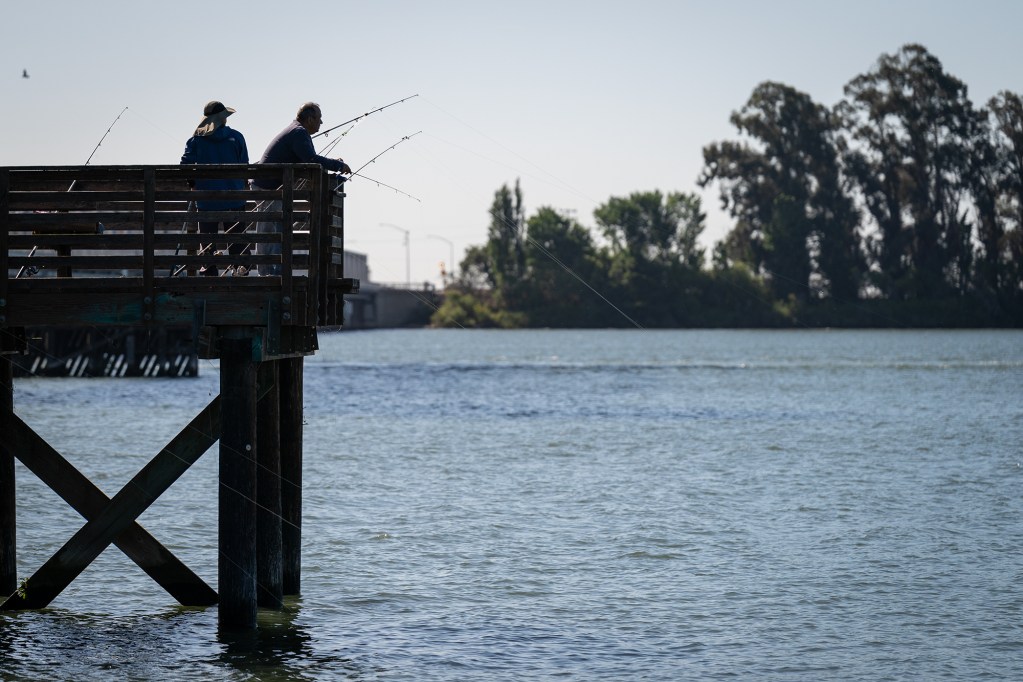Legal rights to use water — particularly those obtained prior to 1914 — lie at the heart of California’s perpetual wrangling over the allocation of increasingly limited water supplies.
For years state officials have been trying, with limited success, to reduce farmers’ diversions, increase river flows and restore declining numbers of fish, particularly salmon, and other wildlife.
The conflict occurs even during periods when the state receives abundant rain and snow and its reservoirs are full. But it becomes more intense during the state’s periodic droughts, as illustrated by what happened in 2014 when then-Gov. Jerry Brown, citing “one of the driest years in recorded state history,” proclaimed a state of emergency.
The state Water Resources Control Board began notifying agricultural water agencies that they must curtail diversions from the Sacramento and San Joaquin river watersheds — essentially the entire Central Valley — having “determined that the existing water supply … is insufficient to meet the needs of all water rights holders.”
The state clearly had the authority to curtail diversions by agencies, with rights granted after the state assumed managerial control of California water in 1914 — ironically exactly one century earlier. However, those with pre-1914 rights balked, contending that under state law the board could not order them to decrease diversions.
Political and legal squabbling ensued and the issue wound up in the courts, and in 2022 an appellate court ruled that the water board did not have legal authority to order pre-1914 rights holders to reduce diversions.
Although the case centered on the board’s drought-induced curtailment orders, everyone involved knew that the outcome could affect the larger issue of water rights and the overall allocation of water supplies.
Environmental groups that had been pressing the board to become more assertive on water rights were disappointed. “A recent decision by California’s Sixth District Court of Appeal highlights everything that’s wrong with California water law,” two officials of Cal Trout, one of the environmental groups, wrote in CalMatters, adding, “the decision shields a class of property owners whose rights were enshrined in law at a time when the rights of citizenship, land ownership and common decency were only afforded to a privileged few.”
Farm interests were, of course, pleased with the decision as they sparred with the water board over the larger issue of how much water must remain in rivers to support wildlife.
Environmental groups have urged the board to issue new water quality standards for the Sacramento-San Joaquin Delta that would indirectly reduce agricultural diversions. Jerry Brown and his successor, Gavin Newsom, have urged the adoption of “voluntary agreements” on diversions without a legal showdown over water rights, but that effort has not yet succeeded.
Last year legislation was introduced to bolster the water board’s curtailment authority, implementing a report by UC Berkeley’s Center for Law, Energy and the Environment, underwritten by the water board, recommending that “the state needs to implement curtailments on a regular basis, not only in times of extreme crisis.”
The most important, Assembly Bill 1337, would have given the water board direct authority to order curtailments of pre-1914 rights holders. However, it sat in limbo for more than a year until its author, Assemblywoman Buffy Wicks, an Oakland Democrat, finally dropped it this month.
The only survivor is AB 460, by Assemblywoman Rebecca Bauer-Kahan, a San Ramon Democrat, which would increase fines for illegal water diversions and is blessed by a multi-party agreement.
The drought orders, the appellate court decision and the non-action by the Legislature this year indicate that California’s water rights remain a major bone of legal and political contention as the larger struggle over water allocation continues.

